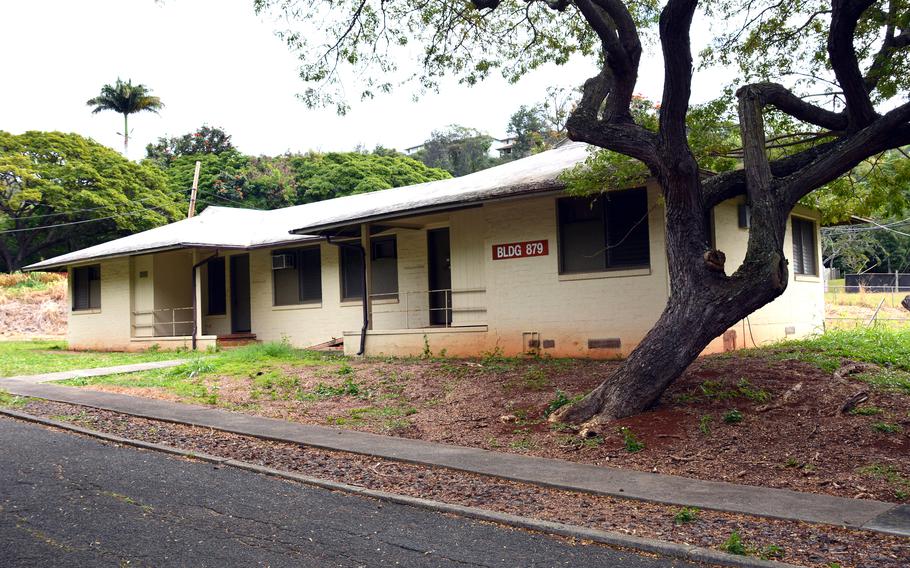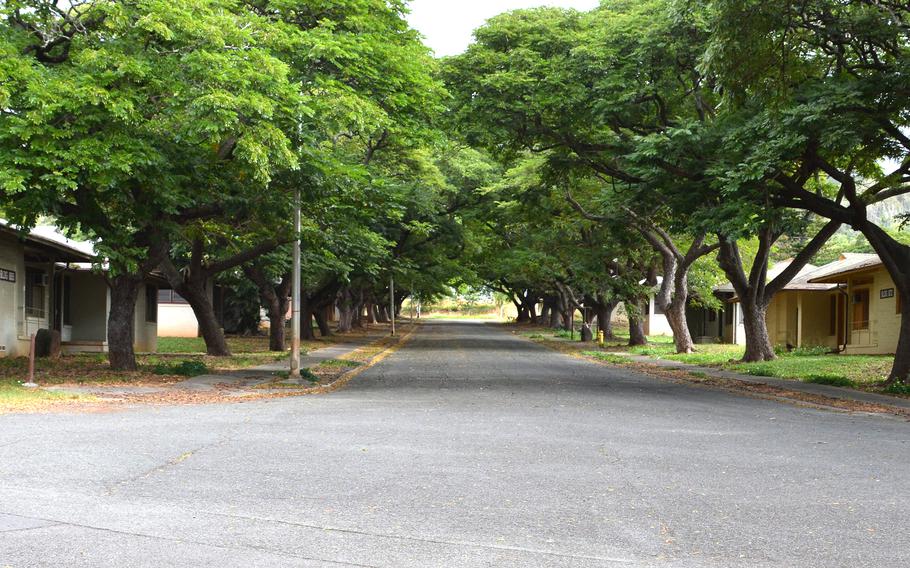
A house stands unoccupied in the Rice Manor neighborhood on Fort Shafter, Hawaii, Feb. 21, 2024. (Wyatt Olson/Stars and Stripes)
FORT SHAFTER, Hawaii — The Army is seeking public comment on plans to demolish a neighborhood of dilapidated World War II-era homes here to make room for a new elementary school, the service announced Tuesday.
The 15 homes, which make up the Rice Manor neighborhood abutting the installation’s golf course, were built between 1941 and 1943, according to an Army news release.
“Rice Manor has been vacant since 2010 because the houses contain lead-based paint and asbestos hazards and no longer comply with the Army or Department of Defense standards for Family Housing,” the release states.
Demolition of the 12 duplexes and three single-family homes would cost an estimated $1.2 million, according to the Army’s Building Disposition Report issued in December.
The Army plans to lease or transfer the roughly seven acres to the Hawaii Department of Education for construction of a new grade school.
Fort Shafter, built between 1905 and 1907, was the first U.S. military post in Hawaii and is now headquarters for U.S. Army Pacific. It is much smaller than Schofield Barracks, which lies 20 miles northwest and is the Army’s largest installation on Oahu.
The disposition report considers three alternatives for the houses, with demolition being the preferred choice.
“Termite infestation has damaged most wooden elements of the houses,” the disposition report states. “Some of the houses suffer from significant structural problems, as indicated by large cracks in the exterior concrete walls.”
A second alternative would be to “mothball” homes, keeping them “as is” and perpetually unoccupied, the report states. This option would be “a poor use of federal land” and come with annual maintenance costs estimated at $10,000 per building.
A third alternative would be to modernize and upgrade the homes for family housing or administrative space.
“Future restoration requires abatement and remediation of asbestos, lead-based paint, and other hazardous materials,” the report states.
“Overall, the size and configuration of the buildings and the site plan make this course of action a very inefficient use of land and space,” the report states.
The Army estimates the cost of renovating and modernizing the houses at $54.9 million.

The Army is seeking to demolish World War II-era homes along this tree-lined street in Fort Shafter, Hawaii, to make way for a new grade school. (Wyatt Olson/Stars and Stripes)
The neighborhood is not without historical significance, according to a Historic American Landscapes Survey conducted by the National Park Service in May 2011.
“This residential neighborhood was part of the U.S. Army’s build up of troops and expansion of facilities in Hawaii prior to and in the early years of World War II,” the survey states. “It also retains significance based on its association with the importance of Fort Shafter as a historical installation.”
The neighborhood was built to house noncommissioned officers and “was consciously designed from the beginning and features several important design principles,” the survey states.
“The relatively informal layout reflects site geography with design concepts similar to Garden City and City Beautiful movements,” the survey continues.
That pair of early 20th-century urban-planning movements sought to incorporate more green and recreational spaces into residential areas.
“Elements of these movements include the road layout responding to the site, lack of driveways to the street, spaciousness between houses, and large lawns and street trees creating a park-like streetscape,” the survey states. “The consistent architectural style and scale of the houses contribute to the neighborhood’s intimate character.”
Army Garrison Hawaii is seeking comments via email through March 21 at usarmy.hawaii.crmp@mail.mil.